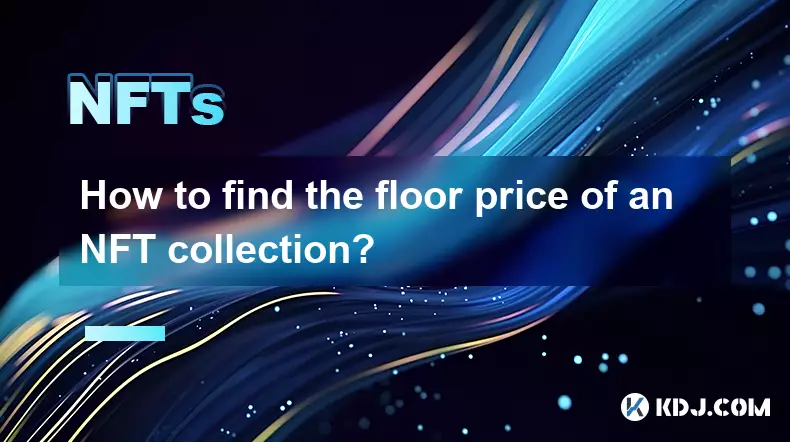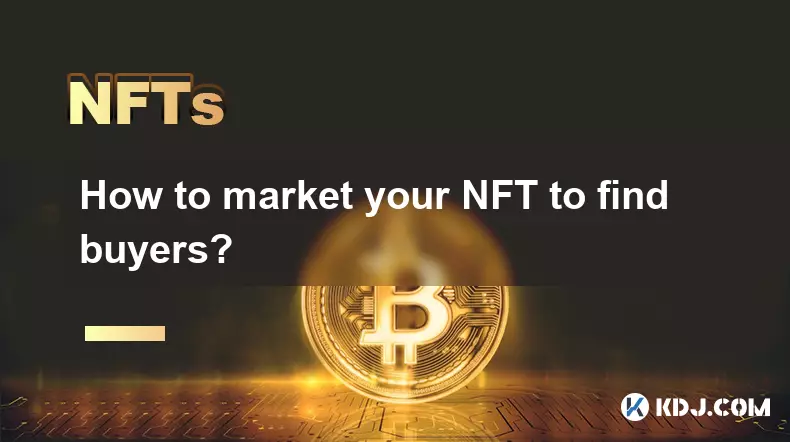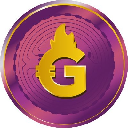-
 bitcoin
bitcoin $114206.058833 USD
-0.82% -
 ethereum
ethereum $4129.796871 USD
-1.31% -
 tether
tether $0.999964 USD
0.00% -
 xrp
xrp $2.640265 USD
-0.68% -
 bnb
bnb $1141.700384 USD
-0.18% -
 solana
solana $200.380665 USD
-2.05% -
 usd-coin
usd-coin $0.999888 USD
0.01% -
 dogecoin
dogecoin $0.200706 USD
-3.43% -
 tron
tron $0.299112 USD
-0.60% -
 cardano
cardano $0.668491 USD
-2.72% -
 hyperliquid
hyperliquid $46.924669 USD
-2.72% -
 chainlink
chainlink $18.286013 USD
-2.66% -
 bitcoin-cash
bitcoin-cash $555.734639 USD
-0.58% -
 stellar
stellar $0.323999 USD
-2.74% -
 ethena-usde
ethena-usde $0.999169 USD
0.00%
How do you create a 3D NFT?
Creating a 3D NFT involves designing a model in software like Blender, exporting it in GLB format, storing it on IPFS, and minting it on a blockchain with metadata and royalties.
Oct 17, 2025 at 03:01 pm

Understanding the Basics of 3D NFT Creation
1. A 3D NFT is a non-fungible token that represents ownership of a three-dimensional digital asset. These assets can range from animated characters to virtual sculptures and are stored on a blockchain to verify authenticity and ownership.
2. The creation process begins with designing a 3D model using specialized software such as Blender, Maya, or Cinema 4D. Artists sculpt, texture, and animate their models to achieve the desired visual effect before preparing them for minting.
3. Once the 3D file is complete, it must be exported in a compatible format like GLB or USDZ, which support textures, animations, and interactivity. These formats ensure the model displays correctly on NFT marketplaces and in digital wallets.
4. Metadata plays a crucial role in defining the attributes of a 3D NFT, including its name, description, properties, and links to the actual 3D file hosted on decentralized storage platforms like IPFS or Arweave.
5. Choosing the right blockchain—such as Ethereum, Solana, or Polygon—is essential, as each has different costs, speeds, and levels of community support. The blockchain determines how the NFT is verified and transferred across platforms.
Selecting Tools and Platforms for 3D NFT Development
1. Digital artists use modeling tools like Blender, a free and open-source application that supports full 3D creation pipelines, including rigging, animation, simulation, and rendering. Its compatibility with NFT standards makes it a popular choice.
2. Texturing software such as Substance Painter allows creators to apply realistic materials and surface details to their models, enhancing visual depth and realism before exporting.
3. Platforms like OBJKT.com, KnownOrigin, and OpenSea support 3D NFT uploads and provide interfaces where users can view models in real time using WebGL-based previewers.
4. Decentralized storage solutions ensure long-term accessibility of the 3D file. Uploading the model to IPFS generates a unique content identifier (CID), which is then embedded into the NFT’s smart contract.
5. Some marketplaces offer built-in tools for minting 3D NFTs directly from the platform, simplifying the process for artists who may not have technical blockchain experience.
Minting and Distributing Your 3D NFT
1. Minting transforms the 3D model and its metadata into a blockchain-verified asset. This involves connecting a crypto wallet like MetaMask, paying gas fees (on networks like Ethereum), and finalizing the smart contract deployment.
2. Creators can choose between lazy minting, where the NFT is only recorded on-chain when purchased, and immediate minting, which registers the asset upon creation. Lazy minting reduces upfront costs.
3. After minting, the 3D NFT becomes visible on the marketplace and can be listed for sale using fixed pricing or auctions. Buyers interact with the model through interactive viewers that allow rotation and zooming.
4. Royalty settings can be programmed into the smart contract, ensuring the original artist receives a percentage of future resale transactions automatically.
5. Promotion through social media, Discord communities, and NFT collectors helps increase visibility. High-quality renders and short video previews of the 3D model often attract more attention.
Frequently Asked Questions
What file types are accepted for 3D NFTs?Most platforms accept GLB, GLTF, and USDZ formats. GLB is preferred because it bundles geometry, textures, and animations into a single file, making it efficient for web display.
Can I animate my 3D NFT?Yes, many 3D NFTs include animations such as looping movements or transformations. Animation data must be embedded in the 3D file during export and supported by the hosting platform’s viewer.
How do buyers view a 3D NFT after purchase?Buyers can view 3D NFTs using compatible digital wallets or marketplaces that support 3D rendering. Some platforms integrate augmented reality (AR) features, allowing users to place the model in physical space via mobile devices.
Is coding knowledge required to create a 3D NFT?No, coding is not necessary for most creators. User-friendly tools and no-code minting platforms enable artists to publish 3D NFTs without writing smart contracts manually.
Disclaimer:info@kdj.com
The information provided is not trading advice. kdj.com does not assume any responsibility for any investments made based on the information provided in this article. Cryptocurrencies are highly volatile and it is highly recommended that you invest with caution after thorough research!
If you believe that the content used on this website infringes your copyright, please contact us immediately (info@kdj.com) and we will delete it promptly.
- Essex Post Office, 5p Coins, and King Charles: A Royal Mint Revelation!
- 2025-10-23 10:30:16
- Waymo's Newark Airport AV Tests: Alphabet's AI Gamble Pays Off?
- 2025-10-23 10:30:16
- King Charles 5p Coins: A Royal Flush in Your Pocket?
- 2025-10-23 10:35:18
- Solana, Crypto Advisory, and Forward Industries: A New York Minute on the Future of Finance
- 2025-10-23 08:51:22
- MAGACOIN: Ethereum Whales Dive into the Hottest Presale of 2025
- 2025-10-23 08:51:22
- Kadena's End of the Road? KDA Token Plummets Amid Project Abandonment
- 2025-10-23 08:55:34
Related knowledge

How to find the floor price of an NFT collection?
Oct 25,2025 at 10:01pm
Floor Price Basics in NFT Markets1. The floor price of an NFT collection refers to the lowest listed price for any item within that specific collectio...

What tools do you need to create your own NFT?
Oct 26,2025 at 07:18am
Essential Software for NFT Creation1. Digital wallet applications such as MetaMask or Trust Wallet are fundamental for storing and managing cryptocurr...

How to flip an NFT for profit?
Oct 26,2025 at 03:54pm
Understanding NFT Flipping Mechanics1. NFT flipping involves purchasing a digital asset during its initial mint or shortly after launch and reselling ...

How to report NFT gains and losses on your taxes?
Oct 28,2025 at 02:19pm
Tax Implications of NFT Transactions1. Every time an NFT is sold, traded, or exchanged for another digital asset, it triggers a taxable event. The Int...

How to set up a Phantom wallet for Solana NFT?
Oct 25,2025 at 07:19pm
Understanding Phantom Wallet and Its Role in Solana NFTs1. Phantom is a non-custodial cryptocurrency wallet designed specifically for the Solana block...

How to market your NFT to find buyers?
Oct 27,2025 at 05:54pm
Building Visibility Through Strategic Social Media Engagement1. Establishing a strong presence on platforms like Twitter, Instagram, and Discord is es...

How to find the floor price of an NFT collection?
Oct 25,2025 at 10:01pm
Floor Price Basics in NFT Markets1. The floor price of an NFT collection refers to the lowest listed price for any item within that specific collectio...

What tools do you need to create your own NFT?
Oct 26,2025 at 07:18am
Essential Software for NFT Creation1. Digital wallet applications such as MetaMask or Trust Wallet are fundamental for storing and managing cryptocurr...

How to flip an NFT for profit?
Oct 26,2025 at 03:54pm
Understanding NFT Flipping Mechanics1. NFT flipping involves purchasing a digital asset during its initial mint or shortly after launch and reselling ...

How to report NFT gains and losses on your taxes?
Oct 28,2025 at 02:19pm
Tax Implications of NFT Transactions1. Every time an NFT is sold, traded, or exchanged for another digital asset, it triggers a taxable event. The Int...

How to set up a Phantom wallet for Solana NFT?
Oct 25,2025 at 07:19pm
Understanding Phantom Wallet and Its Role in Solana NFTs1. Phantom is a non-custodial cryptocurrency wallet designed specifically for the Solana block...

How to market your NFT to find buyers?
Oct 27,2025 at 05:54pm
Building Visibility Through Strategic Social Media Engagement1. Establishing a strong presence on platforms like Twitter, Instagram, and Discord is es...
See all articles










































































